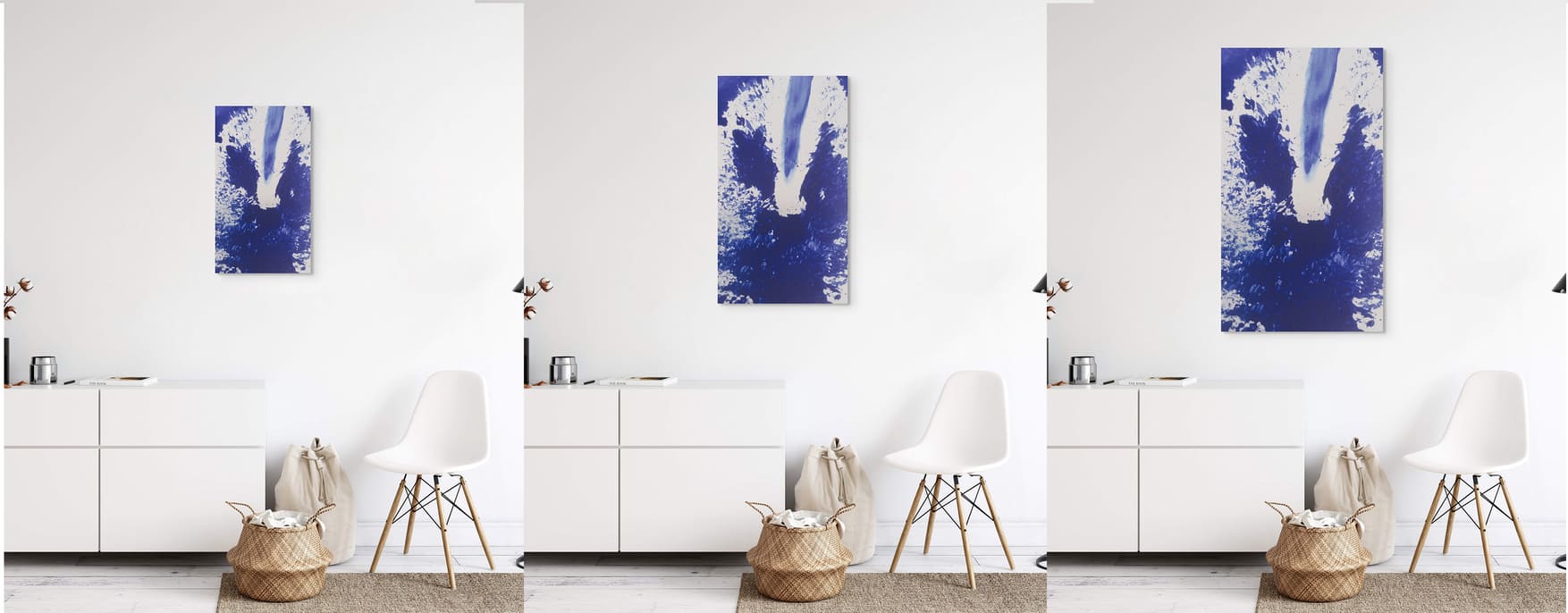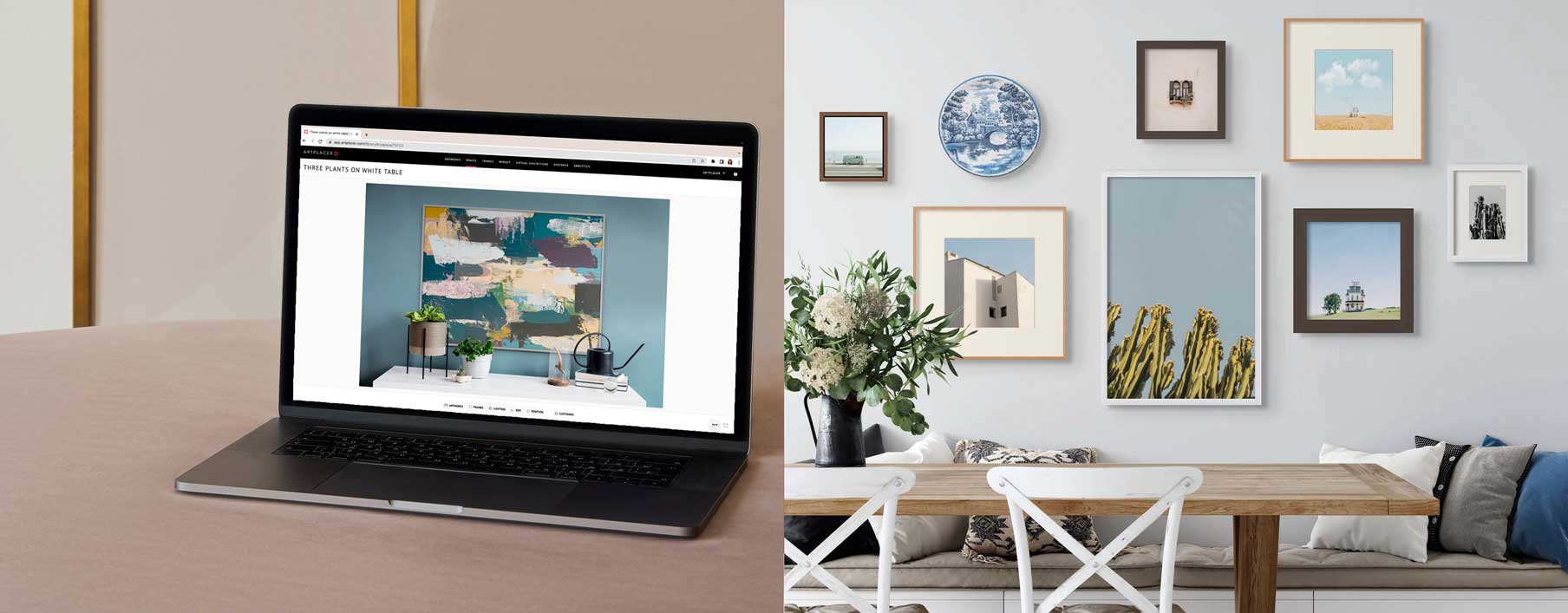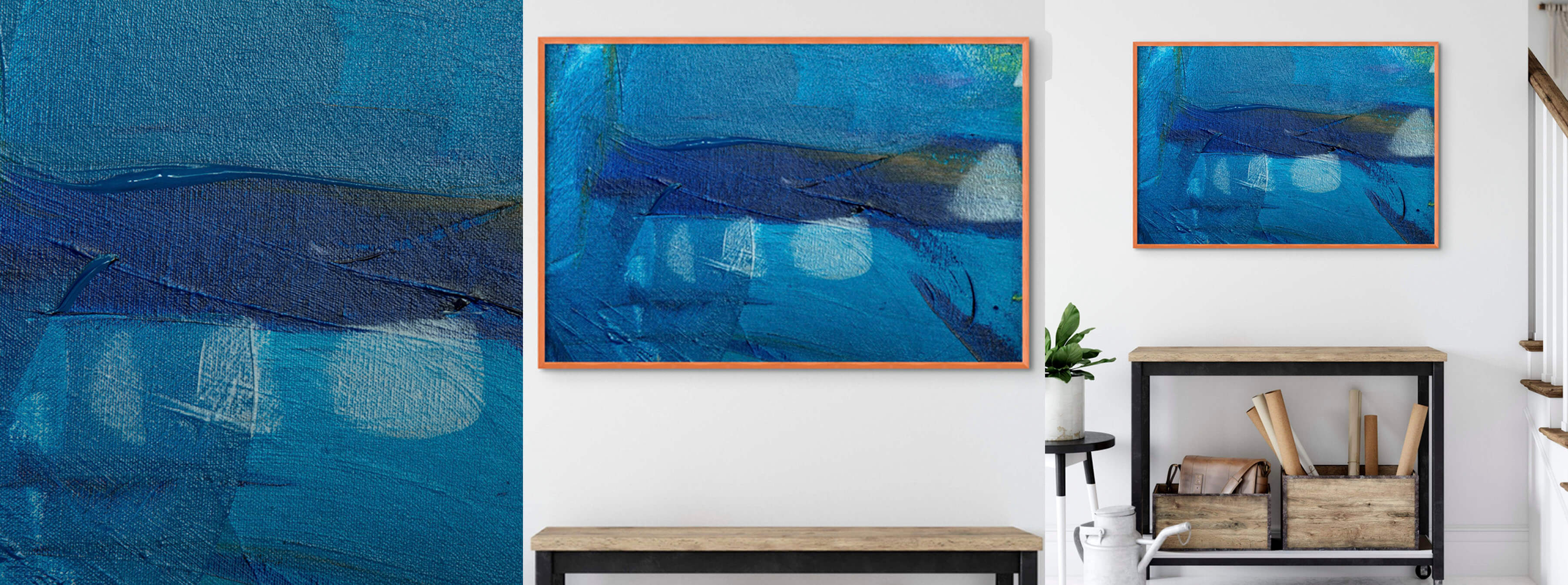For many people, their path as art collectors starts with acquiring fine art prints from their favorite creators. A more accessible first investment that allows them to have a coveted piece in their homes.
But, as an artist, photographer, illustrator, or art print-selling business owner, how can you reflect the value of your art prints and capture potential collector’s attention? Well, a big part of this process rests in how you present the artworks to help solve any doubts or hesitation at the point of sale.
Follow this guide to create mockups of your fine art prints in exquisite digital rooms for promotion and artwork descriptions.
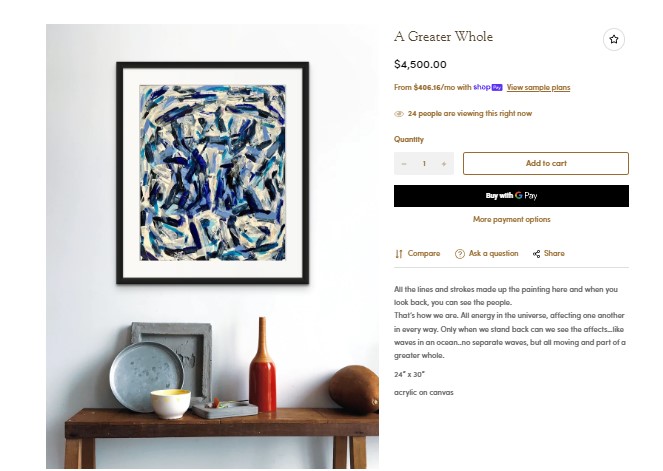
Contents
What is an art print?
If you are not that familiar with the term you might be wondering what an art print is. As an artist, this is an opportunity to expand your business and also, experiment with different mediums, by providing potential collectors with new ways to acquire your pieces.
By definition, an art print is a high-quality reproduction of an original art print created through a variety of mechanical processes of transfer like etching, lithography, screenprinting, and the modern high-quality inkjet print or giclée.
To enhance the quality of the image ink ink-based pigments are used in the transfer process, as well as base surfaces like canvas, fine art paper, photo paper, and watercolor paper.
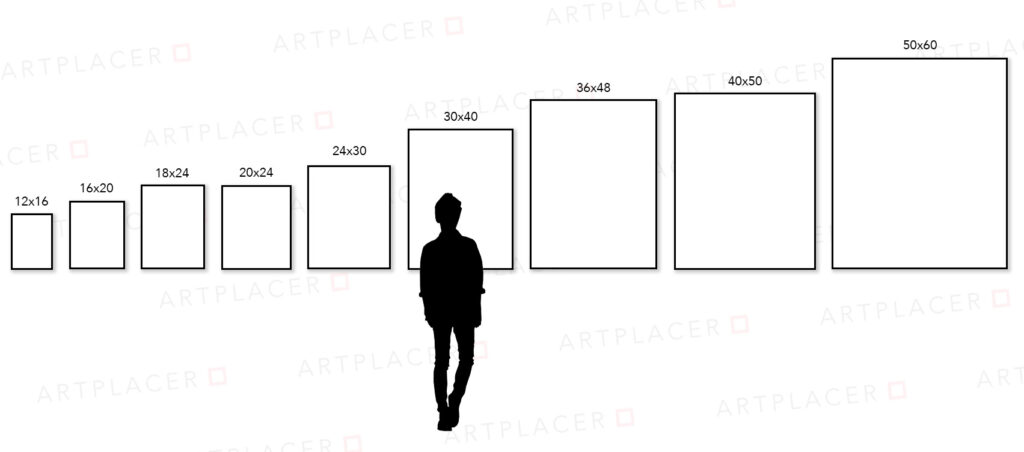
How to enhance your art print description to boost your sales
When a potential collector is roaming through your art e-commerce or the shop section of your website there is one essential thing they need to find: a good artwork description that includes both written details and exquisite visuals.
But a scale or size list might fall short when it comes to giving a full sense of how the artwork (in any size) looks and interacts with the space, and even, other similar pieces. This is where room mockups of your art prints come in handy.
Adding room mockups to your art print descriptions helps the potential collector have a sense of the sizing of the piece, and how it will interact in a certain space (a living room, an office, their bedroom). It can even help them make a choice about the framing and matting that will go better with the print according to their taste and style.
And if you want to take it to the next level, ArtPlacer’s website integration offers the chance to allow the potential art buyer to upload and create mockups of your prints on their own walls!
Room mockups you should include in your art print description
When you want to enhance your fine art print description with visuals a tool like room mockups is the best aid, you can quickly create designs of a print in the available different sizes and help the potential collector picture how it will look in their space.
But what mockups should you include to really enhance your art print description? A best practice in the fine art print selling world is to offer at least three standard sizes covering small, medium, and large options.
Here are some standard sizes commonly used in art prints that you can recreate in the precise scale with room mockups:
-11 x 14 inches
-12 × 16 inches
-16 × 20 inches
-18 × 24 inches
-16 × 20 inches
-24 × 30 inches
-30 × 40 inches

Creating eye-catching room mockups of your art prints
Make sure to take the following details to create a mockup of an art print in an exquisite digital room:
-Look for a room that speaks to your audience’s interests and tastes.
-Find a room where your art print can take center stage.
-Pro tip: check our curated collections and find the perfect room for specific mediums or sizes of artworks.
-Once you have picked the right room, “drag and drop” your art print and customize the design.
-If you choose a Smart Room, make sure to pick a background color that makes your art print pop.
With just a few clicks, now you have a ready-to-use mockup of your art print. Make sure to create one for every available size in your print shop.
Follow Chase Teron’s ArtPlacer Academy Challenge to create mockups of the same artwork in a batch: “Bulk Room Mockups: same artwork, different sizes”. Take the lesson by logging into your ArtPlacer account or starting your free trial.
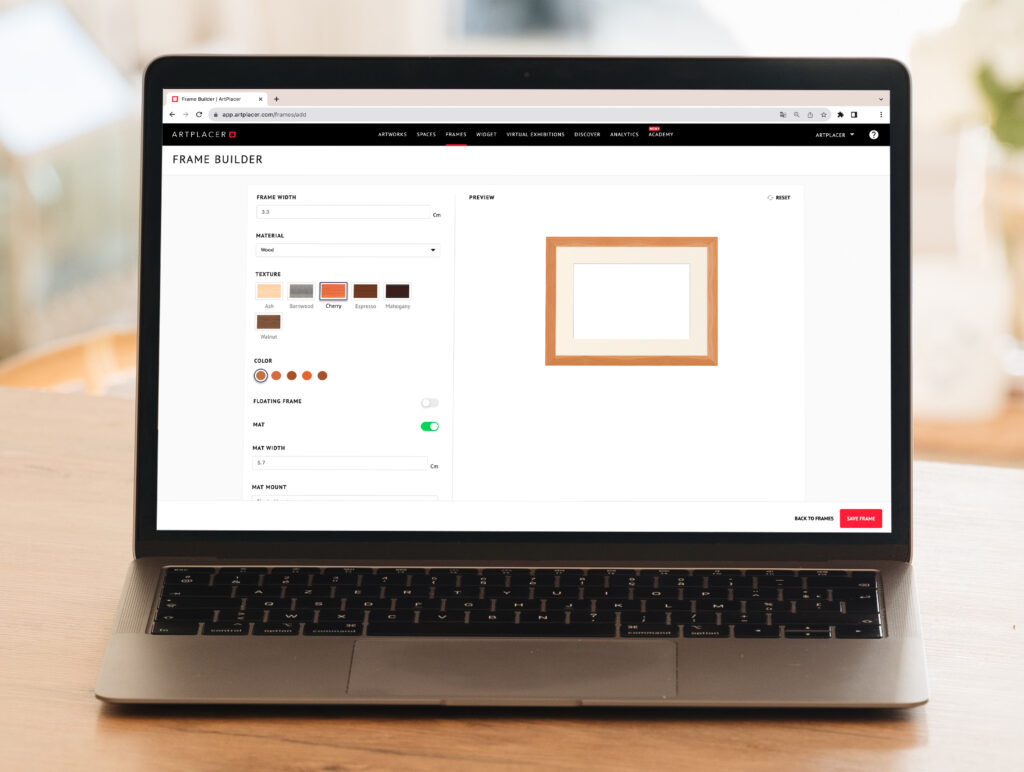
Choosing the right frame for your art print
There is a frame for every art print. When picking a frame take into account that you are not only choosing a piece to protect your art print, but to enhance the final look of the piece and how it will match and dialogue with its surroundings.
ArtPlacer’s Frame Builder gives you the unique chance to recreate in a room mockup the framing and matting options you offer in your e-commerce or the art print shop section of your website, giving the potential collector a clear and precise view of the final look of the piece they are acquiring.
Here are some of the most commonly offered framing options for art prints:
-Oak and walnut wood frames
-Black frame
-Traditional white
-Floating frames
-Decorative or ornamental
-Canvas
And when it comes to mats for art prints these are the collector’s favorites:
-Modern: a thin mat with the same width on all sides.
-Extra-wide: for a more modern contemporary look this extra-wide mat is ideal for square prints and small pieces.
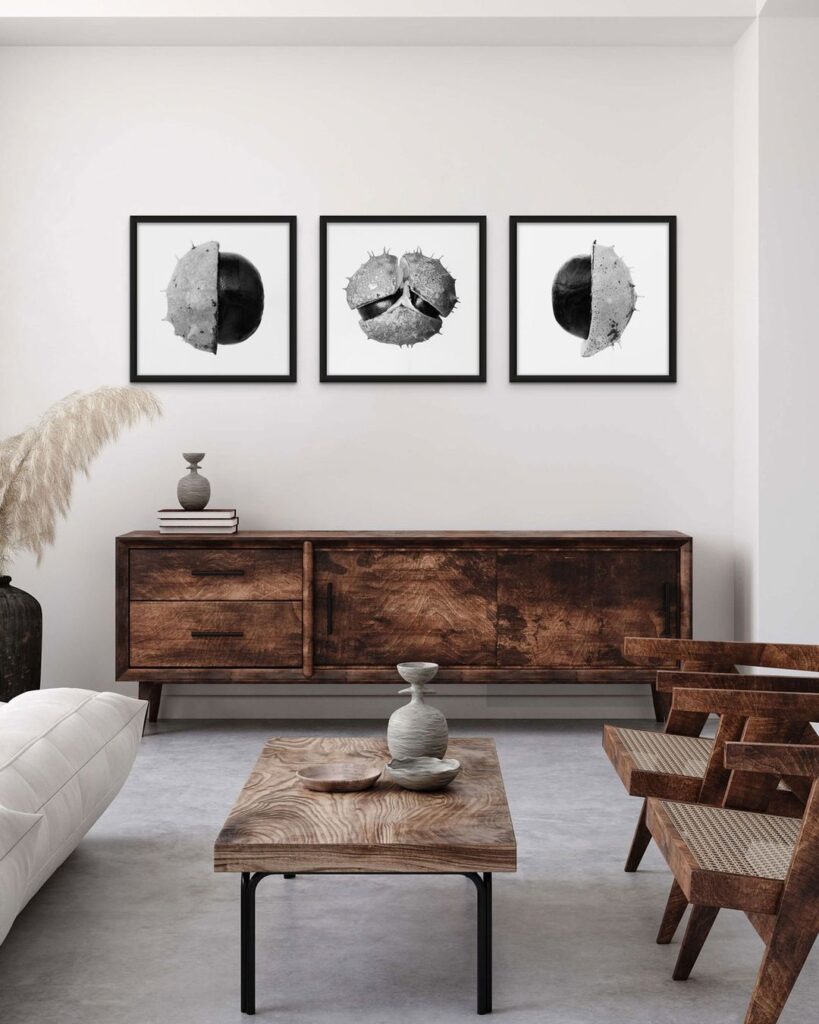
Boost your art print bundles sales with an attractive layout
A good idea to further spark your art buyer’s interest is to showcase a selected group of prints that work as an ensemble or set. You can follow these examples to create a group showcase of a set of art prints in a room mockup.
These are some basic examples of layouts for art print sets or packs, that you can easily recreate:
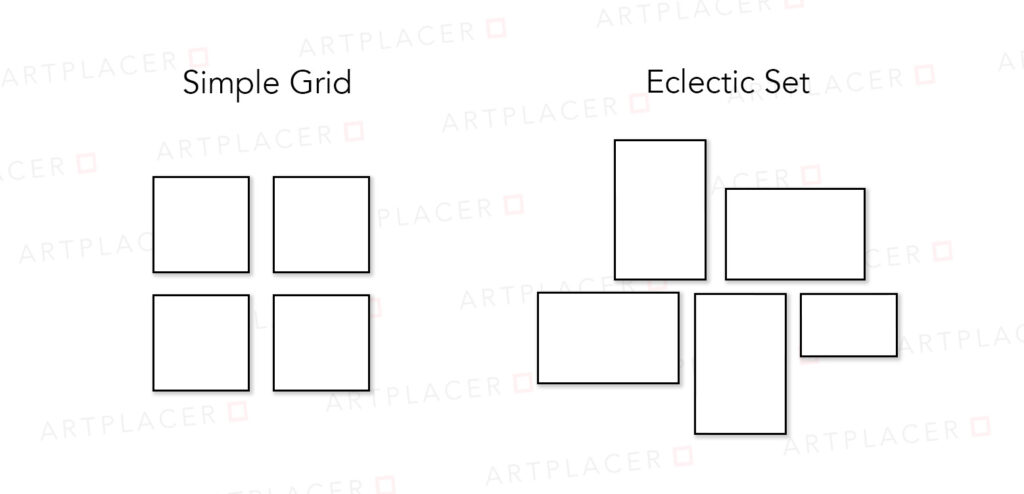
To achieve this look, follow this quick guide:
-Follow the same steps you did to create a room mockup for a single print.
-Add a group of pieces that go well together: choose based on the color palette, style, and subject.
-Click on the Position option at the bottom of the panel and use the different “Align to wall” and “Distribute” options to find that perfect spot.
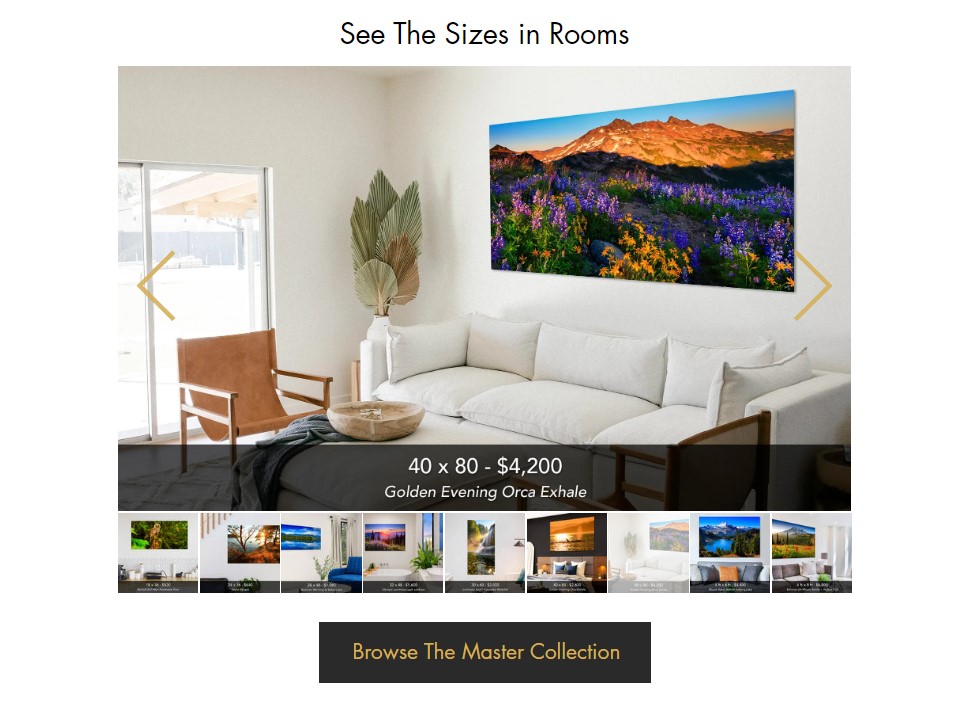
Download your mockup and update your art print description
Now that you have created an exquisite room mockup showcasing your art print, it’s time to update and enhance your product description page.
Click on the three dots at the bottom right of the menu and choose the Crop tool, to select a ready-to-use template of the image in the precise size for e-commerce like Etsy and Shopify, you’ll also be able to create any custom crop.
Download your mockup in one click, go to your webpage, and update your artwork description with this new set of images that will help potential buyers see how your art print will look in a space and make a desired purchase.
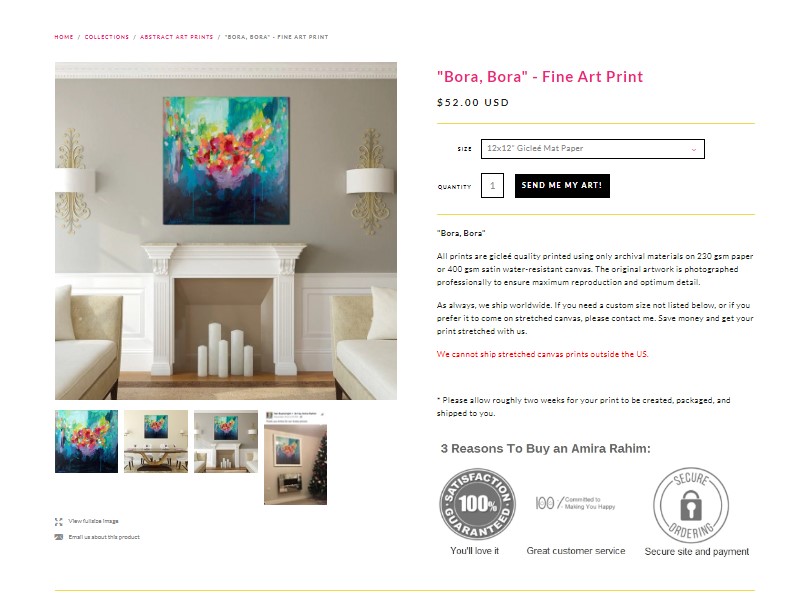
Art print description page must-haves to boost your sales
With this new set of tools, you can fully revamp your artwork description page, making sure that each piece has a full frame of reference and data that will help potential art buyers make their choices.
What should be included in an artwork description? Review this essentials checklist and update your own.
-Detail of the precise size of the piece
-Print materials: this includes the type of surface (type of paper or canvas) and inks used.
-Medium
-Brief description of the piece detailing the subject matter.
-The number of the print and series it belongs to if you are offering limited editions.
-Clarification of availability of a certificate of authenticity and signature of the artist
-If you offer the option: details about available frames and mats.
-Shipping information and cost.
-A clear call to action: offer a seamless shopping experience with an “Add to cart” button.Pro tip: solve any lingering doubts with a “try-before-you-buy” option: with ArtPlacer’s website integrations, collectors can see how the art print looks on their own walls with the help of AR technology.
With this in mind, update your artwork description page and push your promotion efforts to get your art print-selling business on the run.
